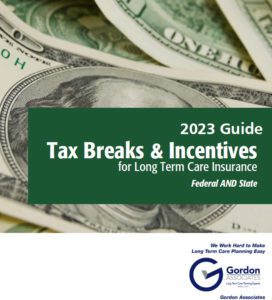When it comes to insurance of any kind, it’s important to know what’s covered and what’s not. That can be especially true when it comes to Long Term Care Insurance. The more you know up front, the better prepared you can be. So it’s important to know not just what’s covered–but also what Long Term Care Insurance (LTCI) does not cover. That said, sometimes understanding your insurance is easier said than done.
That’s because insurance is necessarily complicated. For example, the threshold at which your Long Term Care Insurance kicks in feels quite simple: you must be unable to perform at least two of the six federally recognized Activities of Daily Living (ADLs). But your LTCI could also activate when you demonstrate a cognitive impairment that could be a harm to yourself or to others. While that might sound simple at first, there are some events and expenses that your LTCI policy may not cover–even after it’s been activated!
That’s why knowing what Long Term Care Insurance does not cover can help prepare you for these expenses and leave you more satisfied with your coverage in the long run.
What’s Not Covered by LTCI
Clients become frustrated when they expect Long Term Care Insurance to cover an expense and that doesn’t happen. This is especially true when the expense seems reasonable–for example, if you hire in-home care while living in an independent living community.
Managing these expectations is critical to ensuring client satisfaction. And while not every misunderstanding can be avoided, it may help to focus on some of the most common areas where mismatched expectations occur.
Incidental Activities of Daily Living
If you cannot perform two Activities of Daily Living, you qualify for LTCI. But the same is not true if you are unable to perform Incidental Activities of Daily Living (iADL). An ADL is a basic activity such as feeding yourself. An iADL is every activity that leads up to feeding yourself: balancing your checkbook, purchasing groceries, washing your dishes, and so on.
Unfortunately, clients who cannot undertake iADLS but who can successfully navigate ADLs are not eligible to file a valid LTCI claim. Be sure to ask your LTCI insurance rep about the difference between ADLs and iADLs so you can plan accordingly.
Elimination Period Costs
When you have automobile insurance or health insurance, you have to pay a deductible in order to access your benefits. With Long Term Care Insurance, the process is a little different: there’s a required delay in benefit payouts called the Elimination Period. This period can last anywhere from 0-120 days, and it begins when you file a successful claim. Depending on your LTCI plan, you should therefore count on covering the first few months of costs even with your Long Term Care Insurance. Costs that occur during the Elimination Period will typically not be reimbursed.
Residence in “Independent Living”
When looking for a retirement community, the “independent living” level of care can be appealing. And this type of residence certainly has its benefits. But it’s important to note that your LTCI will not cover costs related to independent living. The reasoning behind this is right in the name: if you’re living independently, you are self-sufficient and, thus, do not require supplemental care. That said, there may be enough personal advantages to independent living, so be sure to weigh those benefits against your financial constraints and possible LTCI benefits.
Independent Hires
When you have health insurance, you can keep out-of -pocket expenses low by seeing in-network physicians. There’s a similar principle in the world of Long Term Care Insurance. In order to receive benefits for in-home care, you need to hire caregivers who are sufficiently licensed (for most policies). If you hire anyone–either personally or through an agency–that is not a licensed caregiver, your LTCI benefits will likely not cover the expenses.
There are some less common policies that can give clients more leeway when it comes to hiring (cash indemnity plans, for example), but it’s not the default. As a result, you really need to understand how your policy handles hiring in-home caregivers. It’s better to be a little over cautious than be surprised by a big expense.
Other Varied Costs
There are always going to be unexpected costs when it comes to long term care. Some of those costs might be somewhat urgent, meaning it’s not always easy to check your policy in the moment. The more you know ahead of time, the better you’ll be able to plan–and the more money you’ll save in the long run.
How to Know What Long Term Care Insurance Does Not Cover
Part of the problem, of course, is that your Long Term Care Insurance plan is written by physicians, lawyers, and specialists–and so it’s long and complex. Much of that complexity is by necessity (people’s lives are complicated, after all).
If you’re thinking of filing a Long Term Care Insurance claim, it may be a good idea to contact a qualified Long Term Care Insurance company, such as Gordon Associates Long Term Care Planning. With decades of experience helping clients successfully manage this transition, we can help you make sense of a plan before you commit.
With the right guidance, you can feel confident that your needs and desires are covered before you sign anything. The best way to avoid mismatched expectations and surprising costs is to make sure everything you want is covered before starting services.
To get the LTCI guidance you need, contact Gordon Associates Long Term Care Planning today!


 To help determine if long-term care (LTC) insurance is right for you, we are offering a FREE informational guide. This is a comprehensive booklet that will answer many of your questions about tax breaks and incentives for LTCI for federal and state taxes.
To help determine if long-term care (LTC) insurance is right for you, we are offering a FREE informational guide. This is a comprehensive booklet that will answer many of your questions about tax breaks and incentives for LTCI for federal and state taxes. To help determine if long-term care (LTC) insurance is right for you, we are offering a FREE informational guide. This is a comprehensive booklet that will answer many of your questions about LTC and assist you with your health care planning.
To help determine if long-term care (LTC) insurance is right for you, we are offering a FREE informational guide. This is a comprehensive booklet that will answer many of your questions about LTC and assist you with your health care planning.